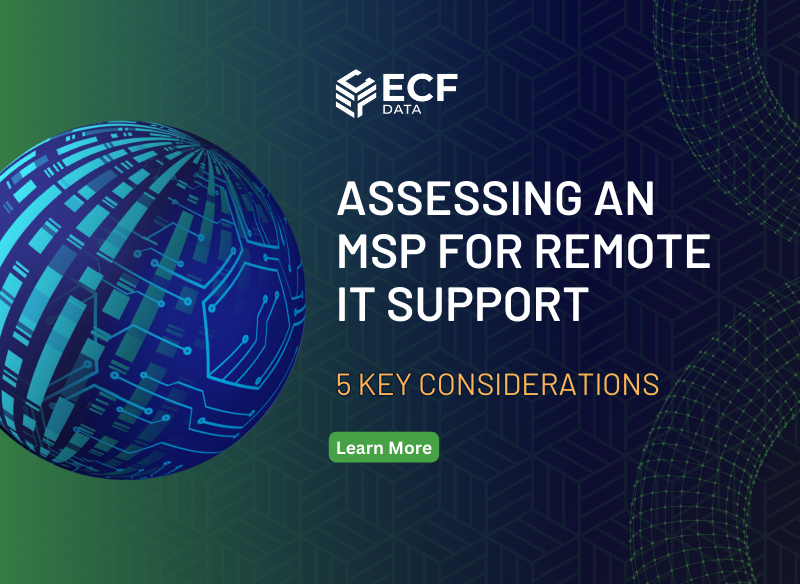-
By: Janina Criador
- IT Consulting
- November 8, 2022
- Comments 0
5 Practical Reasons to Move On-Prem Navision to Azure
Dynamics NAV, also known as Navision and Dynamics 365 Business Central, is one of the most popular Enterprise Resource Planning (ERP) systems among mid-market companies. It is used by about 125,000 companies worldwide, with over 2 million users.
Dynamics NAV provides organizations with end-to-end solutions for linking and managing all processes. It covers financial management, warehouse management, retail and e-commerce, human resources, manufacturing and distribution, business intelligence, and inventory management.
It received a high-satisfactory rating among its users and helped drive business growth. The rewards they reaped include improving workforce productivity, simplifying business processes, and decreasing implementation and adoption costs.
The Difference between Navision On-prem and Cloud
Running Navision on-prem or on the cloud presents various benefits and differences. But before delving into those details, we should dive into what the differences are between On-Prem and Cloud.
Dynamics NAV On-premises
On-prem means that the software is installed as a local app on the computers and servers of the organization. Buying a software license is required when you choose the on-prem route.
Dynamics NAV in the cloud
Cloud-based means that the technology provider will host the software. A web browser is used to access the app. As a SAAS, Software as a Service, organizations are provided with monthly licenses or user seats. Depending on the use, they can add or reduce users as needed.
5 Reasons Why you Should Migrate On-prem Navision to Azure:
Generally, companies prefer on-premises because they need control over their server. However, Dynamics NAV in Azure is highly flexible and customizable (with the more complex ones included in user friendliness) to cater to your business needs.
The pandemic also changed the workforce landscape. With many forced and now preferring remote work, considering the best software selections in this realm is crucial. Microsoft Azure was introduced before the lockdowns, but its rise can be attributed to the modern work changes most of us if not all are experiencing.
Microsoft Azure is a collection of cloud services that IT experts and developers use to manage, deploy, and build apps via Microsoft’s global network of data centers. Since built on the cloud, it can be created and deployed wherever, using preferred apps, frameworks, and tools.
Combining Dynamics NAV and Azure takes advantage of the Software-as-a-Service (SaaS) environment. With that, there’ll be no need to worry about security, understanding technology, and supporting servers.
Dynamics NAV on Azure is an optimum way to manage the solution in remote work. It offers an easy-to-use, quick-to-deploy solution on a secure enterprise-class cloud platform. Undeniably, more and more companies are making the switch. Want to know why? We list them down below.
1. Running on Azure is more affordable:
Azure has a different pricing model compared to Navision on-prem. It runs on a “pay-as-you-go scheme. So, some of the benefits that you can enjoy are:
- No upfront investments
- No monthly or yearly commitment
- Savings on IT administration costs
All these are possible because the hardware is being taken care of off-premises. Though most businesses are apprehensive that they wouldn’t have control over their spending, that is not necessarily the case. Instead, they can conserve cash flows by favouring OPEX and eliminating CAPEX.
Partnering with Azure experts can also help you optimize your spending. ECF Data grants a transparent and predictable pricing model as it is set up as a subscription.
2. Dynamics NAV on Azure is scalable.
When running on Azure, scaling up or down is easy. You can also set it automatically or depending on your needs. Paying for overcapacity or running out of resources is the least of your worries. You can change the size, optimize usage with a run and stop settings, and configure endpoints and load balancer settings with a few clicks.
3. Enjoy the no-fuss and quick migration of your on-prem Navision to Azure
As with any business, time is essential. ECF Data’s Navision to Azure migration is performed quickly minimizing time to hours instead of weeks. You can instantly access the solution because you remove the need to purchase, scope, deploy, and test infrastructure. It reduces the deployment time and leads to a faster ROI.
4. Azure is Accessible Through All Platforms and Devices
Since the solution is on Azure, it is easier to operate and access the Dynamics Database. There’s no need to install customized applications. Given that, it can be used using different devices from various locations.
Azure is also up 24/7. It means that Microsoft technicians and engineers monitor the infrastructure in real-time. So when the hard drive fails, your server is automatically moved to a new set of movements. You can power up efficiency with remote working because you can always access the drive. It is highly beneficial for businesses because it drives productivity and collaboration.
5. Microsoft Azure enables robust security, backup, and privacy controls
Microsoft Azure offers 24/7 worldwide support in geographically scattered data centers. Your Microsoft Azure Dynamics NAV solution will be hosted in a secure, multi-tier data center. It is where data and infrastructure are kept in the finest physical and digital condition possible. It is armed with daily backups generated and provides thorough intrusion checks.
Cloud security does not have to be scary or complicated. While it can be hard to trust when you cannot see or touch an actual server, security in the cloud is secure. You can take comfort in knowing that Azure is built on the same technologies that you, and millions of others, already trust, such as Windows Server, SQL Server, Active Directory, Hyper-V, and more. It means a consistent, familiar, and stable environment.
Leave your on-prem Navision to Azure migration to professionals
Are you interested in levelling up your Navision system or making it optimal for remote work? Or maybe you need to develop a strategy to get better value from your investment.
ECF Data can help. We are composed of an agile team committed to driving positive business outcomes. Our knowledge and experience are geared towards providing solutions to your challenges and developing a strategy for your long-term goals.









